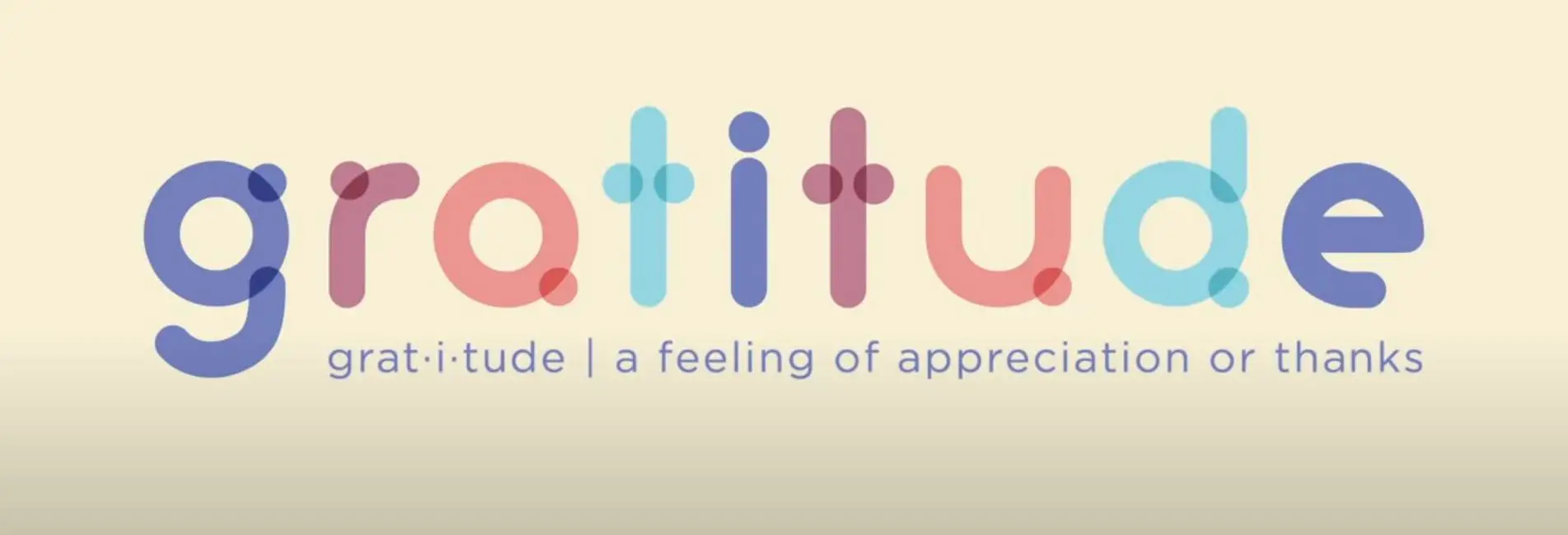|
When you want a feel-good, low-impact workout that also makes you work up a sweat in minimal time, there’s one answer: power yoga. Unlike your traditional calming flow, it’s basically a high-intensity form of yoga that focuses on cardio and strength-building. Hello, full-body burn. There Are 38 Million Power Yoga Videos—These Are the 9 Best You Can Do in 10 Minutes or Less 1. Rebecca Louise 10-minute full-body power yoga workout The nice thing about this power yoga circuit is you can make it as easy or as hard as you want. 2. Deliciously Ella sweaty 10-minute fire flow You’ll definitely get your cardio in with this fun—yet challenging!—flow. 3. Five Parks Yoga 10-minute power yoga class This power yoga video isn’t for newbies. If you’re still working on your balance, you might want to start with another option. 4. Yoga With Bird 5-minute morning yoga power flow Only have 5 minutes? Then this morning yoga power flow is the perfect way to start your day 5. PsycheTruth 10-minute power yoga workout If you’re looking for a beginner-friendly option, this is it. This workout specifically helps strengthen your arms and core. 6. Yoga by Candace 10-minute power yoga vinyasa If you’re a fan of headstands, you’ll have a lot of fun with this power yoga vinyasa workout. If not, you might want to skip it until you get it nailed down. 7. Yoga with Kassandra 10-minute cardio yoga workout You’ll definitely work up a sweat in this booty, core, and upper body-focused power yoga flow. 8. SarahBethYoga 10-minute power yoga workout for abs You’ll get in a killer core workout in this power yoga workout that will make your abs feel like they’re on fire. 9. Koya Webb 10-minute HIIT yoga This workout combines traditional yoga with HIIT movements added in to give your metabolism a boost. These are some of the most common mistakes people make with yoga:
0 Comments
BY GEOFFREY JAMES Music makes you more productive but here's a playlist that might make you more successful. It's been known for decades that music makes you more productive. People who listen to music at work feel better about the workplace and tasks get done more quickly. People even rate conversations as "more satisfying" when there's background music present. A recent survey of over a thousand employers and employees, conducted by the workplace music provider CloudSound gauged the respondents' feelings about music in the work place. Among the findings:
"Brain imaging studies have shown that various parts of the brain may be activated by a piece of music." In other words, you can use specific pieces of music to "program" your brain to think and feel in specific ways. So, then, which songs are the most likely to make YOU more productive and satisfied at work? That varies according to your individual background and personality, but here are 39 songs that nine of the world's most successful people have in their playlist, in alphabetical order:
The opinions expressed here by bergenreview.com columnists are their own, not those of bergenreview.com.
 The research is clear. You can improve your physical and mental health by thinking this more frequently. Most people realize that the mind and body are connected into a feedback loop. "A healthy mind in a healthy body" is why psychologists and physicians alike recommend sensible eating and regular exercise. Neuroscientists, however, recommend a different approach. Because they know that body-centric lifestyle changes (like diet and exercise) are difficult to maintain, they recommend starting with the mind. And they've identified the one thought that, when regularly focused upon, is most likely to propel your mind and body into an upward spiral. That thought? Neuroscience Says Your Body and Mind Get Stronger When You Focus on GRATITUDEYes, that sounds all crunchy granola, but there's actually extensive research into the positive mental and physical effect of that specific thought and emotion, according to a fascinating article published by the Wharton Health Care Management Alumni Association. Here are some highlights: 1. Gratitude makes you more likely to exercise. According to the Journal of Personality and Social Psychology, people who keep gratitude journals "reported fewer health complaints, more time exercising, and fewer symptoms of physical illness." 2. Gratitude reduces your stress level. According to a study published by National Center for Biotechnology Information "cultivating appreciation and other positive emotions showed lower levels of stress hormones [specifically] a 23 percent reduction in cortisol and 100 percent increase in DHEA/DHEAS levels." 3. Gratitude improves the quality of your sleep. According to a study conducted at the University of Manchester and published in the Journal of Psychosomatic Research, regularly focusing on gratitude and thankfulness "improved quality of sleep and [resulted in] longer sleep hours." 4. Gratitude increases your emotional well-being. According to studies published in the Journal of Research in Personality, gratitude leads to lower depression and higher levels of social support while making you less likely to consider suicide. 5. Gratitude makes your heart stronger and healthier. According to research conducted at Massachusetts General Hospital, the presence of gratitude in a patient "may independently predict superior cardiovascular health." Other studies show that gratitude increases the physical activity and therefore the speed of recovery for heart patients while reducing their inflammatory biomarkers. 6. Gratitude makes you a more effective leader. According to a Wharton study, grateful leaders "motivated employees to become more productive [because] when employees feel valued, they have high job satisfaction, engage in productive relationships, are motivated to do their best, and work toward achieving the company's goals." In some of the studies, participants kept a gratitude journal in which they'd list at the end of the day all the reasons they felt grateful. That's a good technique, but you can feel gratitude all day by simply asking yourself, "What can I feel grateful for right now, right here?" Your brain will come up with an answer. Article by Lauren Cahn of "Eat this not that" Until you get the vaccine, you can try eating your way to a stronger immune system. COVID-19 is now associated with at least 98 symptoms, some of which you never want to experience, and others that may not go away. Unfortunately, it's currently not possible to make yourself immune to the virus that causes COVID-19, even if you've already had it. So it's crucial to know what you can do right now to cut your COVID risk as cases continue to spike. It's important to steer clear of these 100 worst foods for cold and flu and these 20 foods that are surprisingly hard on your immune system, and instead, eat in a way that supports the hard work your immune system has to do this winter. According to registered dietitian Elisa Bremner, that means limiting processed foods, eating in moderation, and partaking in any or all of the following "super-immune boosters." (Related: The 7 Healthiest Foods to Eat Right Now.) 1) Mushrooms Mushrooms have a longstanding reputation for supporting immune function, and lately, their name has been coming up in scientific literature that addresses foods that help cut COVID risk. Not only are mushrooms linked to increasing the number and strength of the body's immunity-boosting T-cells, but they're also one of the only natural food sources of vitamin D, according to Bremner. Vitamin D is one of just two vitamins infectious disease expert, Dr. Anthony Fauci has said he bothers supplementing in an effort to cut his own COVID risk. In addition, Bremner points out that shitake mushrooms, in particular, are a good source of zinc, a mineral that's crucial to immune system function. 2) Red bell peppers Dr. Fauci has also been supplementing vitamin C because, as he says, it's a good antioxidant (which means, among other things, that it helps combat free radicals in your body, which can contribute to disease). However, if you want to maximize the vitamin C you can get from your diet, Bremner suggests slicing up some red bell peppers and adding them to, well, everything. "Most people, when they think of vitamin C, think of citrus," Bremner tells Eat This, Not That!, "but peppers are packed with even more." 3) Garlic Garlic has a long history as an herbal remedy and has been cited by many experts in many studies for its immune-boosting properties. "Among other things, garlic contains a component called allicin, which is not only antibacterial but also anti-inflammatory," according to Alicia Galvin, Resident Dietitian for Sovereign Laboratories>. 4) Ginger Ginger's anti-inflammatory properties can help lessen the upper-respiratory symptoms that are associated with COVID-19. "When you eat ginger, you can feel that heat and you know it's fighting," observes Bremner. While there hasn't been a ton of research into ginger's antiviral properties, we know it fights hard against bacterial threats. And perhaps more importantly, research suggests ginger can help control high blood pressure," which poses a significant risk to people who do end up getting COVID-19. 5) Broccoli Broccoli is basically the standard-bearer when it comes to superfoods, Bremner tells Eat This, Not That! "You can't beat its combination of vitamins A, C, and E, all of which are known to help boost immune function. Vitamin A, in particular, may help cut your risk of COVID-19, Bremner points out, in that it supports healthier internal tissues, including the lining of the respiratory tract. And as an extra-added bonus, vitamin A may be instrumental in helping you lose weight this winter. 6) Yogurt Yogurt is rich in protein, vitamins, and trace elements, all of which are necessary for maintaining optimal immune response. Perhaps more importantly, yogurt is a great source of probiotics, which help support the gut microbiome, which is, itself, critical to supporting immune function, according to Bremner. Bonus points if you select Greek yogurt, which is even higher in protein than other yogurts 7) Sauerkraut Sauerkraut is another food that supports the immune system via the gut microbiome. What makes sauerkraut so powerful as an immune system supporter, according to Galvin, is the fact that it is fermented. Fermented foods are a great source of good bacteria for the gut. In addition, fermentation enhances the antioxidant properties of the cabbage sauerkraut is made from. The opinions expressed here by Bergen Review Media columnists are their own, not those of Bergenreview.com.  When emotional intelligence (EQ) first appeared to the masses, it served as the missing link in a peculiar finding: people with average IQs outperform those with the highest IQs 70% of the time. This anomaly threw a massive wrench into the broadly held assumption that IQ was the sole source of success. Decades of research now point to emotional intelligence as being the critical factor that sets star performers apart from the rest of the pack. The connection is so strong that 90% of top performers have high emotional intelligence. Emotional intelligence can also be very useful when it comes to alleviating stress. In an article for The Harvard Business Review, Kandi Wiens, a Senior Fellow at the University of Pennsylvania Graduate School of Education in the PennCLO Executive Doctoral Program and Director of the Penn Master’s in Medical Education Program, wrote, “When we can’t focus at work because of distractions, it may lead us to feel stressed about not being productive, which then causes us to focus less, further feeding the cycle. Unfortunately, most of us don’t notice our focus declining until we become completely overwhelmed.” But by using emotional intelligence skills such as self-awareness, mindfulness, and shifting our focus to others we can break this cycle. “Instead, pay attention to the causes of your stress and inability to focus and then take actions that promote improvements in the specific brain functions that drive concentration and awareness.” It should also be noted that emotional intelligence accounts for 90% of career advancements, emotional intelligence is responsible for 58% of your job performance and people who have these types of skills make $29,000 more, on average than their non-emotionally intelligent colleagues. “No doubt emotional intelligence is more rare than book smarts, but my experience says it is actually more important in the making of a leader. You just can’t ignore it.” – Jack Welch Emotional intelligence is the “something” in each of us that is a bit intangible. It affects how we manage behavior, navigate social complexities, and make personal decisions to achieve positive results. Despite the significance of EQ, its intangible nature makes it very difficult to know how much you have and what you can do to improve if you’re lacking. You can always take a scientifically validated test, such as the one that comes with the Emotional Intelligence 2.0 book.
Unfortunately, quality (scientifically valid) EQ tests aren’t free. So, I’ve analyzed the data from the million-plus people Talent Smart has tested in order to identify the behaviors that are the hallmarks of a low EQ. These are the behaviors that you want to eliminate from your repertoire. You don’t get angry Emotional intelligence is not about being nice; it’s about managing your emotions to achieve the best possible outcomes. Sometimes this means showing people that you’re upset, sad, or frustrated. Constantly masking your emotions with happiness and positivity isn’t genuine or productive. Emotionally intelligent people employ negative and positive emotions intentionally in the appropriate situations. You get stressed easily When you stuff your feelings, they quickly build into the uncomfortable sensations of tension, stress, and anxiety. Unaddressed emotions strain the mind and body. Your emotional intelligence skills help make stress more manageable by enabling you to spot and tackle tough situations before things escalate. People who fail to use their emotional intelligence skills are more likely to turn to other, less effective means of managing their mood. They are twice as likely to experience anxiety, depression, substance abuse, and even thoughts of suicide. You have difficulty asserting yourself. People with high EQs balance good manners, empathy, and kindness with the ability to assert themselves and establish boundaries. This tactful combination is ideal for handling conflict. When most people are crossed, they default to passive or aggressive behavior. Emotionally intelligent people remain balanced and assertive by steering themselves away from unfiltered emotional reactions. This enables them to neutralize difficult and toxic people without creating enemies. You have a limited emotional vocabulary All people experience emotions, but it is a select few who can accurately identify them as they occur. Our research shows that only 36% of people can do this, which is problematic because unlabeled emotions often go misunderstood, which leads to irrational choices and counterproductive actions. People with high EQs master their emotions because they understand them, and they use an extensive vocabulary of feelings to do so. While many people might describe themselves as simply feeling “bad,” emotionally intelligent people can pinpoint whether they feel “irritable,” “frustrated,” “downtrodden,” or “anxious.” The more specific your word choice, the better insight you have into exactly how you are feeling, what caused it, and what you should do about it. You make assumptions quickly and defend them vehementlyPeople who lack EQ form an opinion quickly and then succumb to confirmation bias, meaning they gather evidence that supports their opinion and ignore any evidence to the contrary. More often than not, they argue, ad nauseam, to support it. This is especially dangerous for leaders, as their under-thought-out ideas become the entire team’s strategy. Emotionally intelligent people let their thoughts marinate because they know that initial reactions are driven by emotions. They give their thoughts time to develop and consider the possible consequences and counter-arguments. Then, they communicate their developed idea in the most effective way possible, taking into account the needs and opinions of their audience. You hold grudges The negative emotions that come with holding on to a grudge are actually a stress response. Just thinking about the event sends your body into fight-or-flight mode, a survival mechanism that forces you to stand up and fight or run for the hills when faced with a threat. When a threat is imminent, this reaction is essential to your survival, but when a threat is ancient history, holding on to that stress wreaks havoc on your body and can have devastating health consequences over time. In fact, researchers at Emory University have shown that holding on to stress contributes to high blood pressure and heart disease. Holding on to a grudge means you’re holding on to stress, and emotionally intelligent people know to avoid this at all costs. Letting go of a grudge not only makes you feel better now but can also improve your health. You don’t let go of mistakes. Emotionally intelligent people distance themselves from their mistakes, but they do so without forgetting them. By keeping their mistakes at a safe distance, yet still handy enough to refer to, they are able to adapt and adjust for future success. It takes refined self-awareness to walk this tightrope between dwelling and remembering. Dwelling too long on your mistakes makes you anxious and gun shy, while forgetting about them completely makes you bound to repeat them. The key to balance lies in your ability to transform failures into nuggets of improvement. This creates the tendency to get right back up every time you fall down. You often feel misunderstood. When you lack emotional intelligence, it’s hard to understand how you come across to others. You feel misunderstood because you don’t deliver your message in a way that people can understand. Even with practice, emotionally intelligent people know that they don’t communicate every idea perfectly. They catch on when people don’t understand what they are saying, adjust their approach, and re-communicate their idea in a way that can be understood You don’t know your triggers. Everyone has triggers — situations and people that push their buttons and cause them to act impulsively. Emotionally intelligent people study their triggers and use this knowledge to sidestep situations and people before they get the best of them. You blame other people for how they make you feel. Emotions come from within. It’s tempting to attribute how you feel to the actions of others, but you must take responsibility for your emotions. No one can make you feel anything that you don’t want to. Thinking otherwise only holds you back. You’re easily offended. If you have a firm grasp of who you are, it’s difficult for someone to say or do something that gets your goat. Emotionally intelligent people are self-confident and open-minded, which create a pretty thick skin. You may even poke fun at yourself or let other people make jokes about you because you are able to mentally draw the line between humor and degradation Bringing it all together Unlike your IQ, your EQ is highly malleable. As you train your brain by repeatedly practicing new emotionally intelligent behaviors, it builds the pathways needed to make them into habits. As your brain reinforces the use of these new behaviors, the connections supporting old, destructive behaviors die off. Before long, you begin responding to your surroundings with emotional intelligence without even having to think about it.  All meditation is created equal, right? You sit, with your eyes closed, and concentrate on deep breathing. Not necessarily. Some types of meditation can help calm your mind, while others focus on improving mental clarity, while others help improve deep breathing and wellness. Regardless of your ultimate goal with meditation, it will help improve overall well-being and have a calming effect on you. It’s the place where you can sit for just 10 minutes, and gain more insight into your mind and how it works. But what types of meditation are best for you, and which ones will deliver the goals/outcomes you want to see? Consider a few of these different types of meditation if you’re new to meditation and want to improve your mind, body, and spirit. Types of meditation When it comes to what kind of meditation to start with, always consider your needs, goals, and personal preferences. It also doesn’t hurt to give all of the following types of meditation practices a try. Instead of letting someone else tell you what kind of meditation to practice, see for yourself. The type of meditation practice you choose may also depend on your learning style. If you want to learn with a teacher or at a meditation retreat, certain forms of meditation will be better suited for you than others. If you’re interested in learning meditation on your own at home, start with a simple practice that allows you to use a guided meditation app. Open Monitoring This form of meditation focuses on keeping your attention on an object, without judgment surrounding it. You’ll focus on clearing preconceived notions, ideas, perceptions, and attachments to that object. Therefore, you don’t focus on the ways you believe it smells, looks, and feels; instead, you focus on the object, with a clear frame of mind and no conceptual bias before seeing it. The sole purpose is for non-reactive monitoring. This helps you learn how to be less judgmental outside yourself as well. At work, meeting new people, in new friendship groups, or even when you’re going to a local event you’re invited to, you’ll learn to arrive at these places, and just enjoy the environment and the people there. You don’t take any preconceived ideas or notions with you, and only let them form after the fact. Loving Kindness This form of meditation, loving-kindness meditation, is also known as Metta meditation; your focus is to cultivate loving feelings and kindness towards the things, people, and society around you. You don’t have enemies or external stresses. Instead, you focus on loving thoughts, thoughts of kindness, and making peace with everything and everyone around you. Practitioners of this type of meditation are open to external loving and kindness and accept it from others. Towards your loved ones, strangers, or even your boss/coworkers. You want to build a better world around you and focus on loving, kindness, and cultivating an environment of peace that surrounds you. Focuses on reducing anger, frustration, stress, resentment, and interpersonal conflicts, are top priorities when practicing this type of meditation. Mindfulness Mindfulness meditation is another one of the primary types of meditation that will help improve yourself from within. This form of meditation helps you to remain aware of the here and now, rather than focusing on what’s to come, or what has already happened. You’re focusing on remaining mindful of the thing you are doing, or the location you are at right now. You are not thinking about what will come next, where you have to be after work, or what time you have to pick up the kids. Your primary focus is on what you are doing, regardless of the level of importance, and learning to let go of things that are not right in front of you. It’s also a great type of meditation for beginners. You can do this almost anywhere. If you are stuck at the doctor’s office, don’t think of it as being stuck. Instead, focus on clearing your mind. Focus on your health and wellness. Think about improving yourself with the visit you’re going to have with the doctor. If you’re at a long line at the grocery store, you’ll focus on waiting and patience. You aren’t focused on the drive home, or unloading the groceries. Just focus on being present, and being where you are, when you are there. Vipassana (Insight) Vipassana is a type of meditation that is very similar to mindfulness. It’s a tradition from Tibetan Buddhism that translates to “insight” in English. The goal of insight meditation is to delve into the body and mind’s connection through contemplative practice. During this meditative practice, you practice being “the watcher.” The watcher is a non-judgemental open awareness of thoughts, sensations, and feelings that come and go through consciousness. Often, placing this awareness on the breath is the vehicle to reach this meditative state. With enough practice, it’s possible to get a glimpse of “the watcher.” You can begin to see your open-awareness as just another experience in consciousness. Body Scan This is one of the best types of meditation for scanning oneself, your body, and encourages practitioners to find areas of tension from within. Body scan meditation is also often referred to as progression meditation. Its primary goal is to help you alleviate tension, improve the muscular system, and focus on relaxation sessions. You’ll typically start at one end of your body and work your way through the body. Throughout the practice, find areas of tension, and focus on targeting relaxation and relaxing thoughts to those areas. This form of meditation can help improve chronic pain, help alleviate tension and stress, and improve muscular and skeletal system pain over time. It’s also a more accessible practice to learn for beginners as it engages your attention more than other types of meditation. Kundalini Yoga This form of physical activity or meditation, focuses on the mantras alongside deep breathing techniques. You concentrate on deep breathing, to help “eliminate toxins.” This is what is claimed, but we prefer the more scientific benefits around Kundalini, such as removing harmful thoughts from within. You’ll breathe slowly and deeply when you’re engaged in this physical meditation. You’re here to focus on breathing in and breathing out, and you’re trying to eliminate the clutter and any other thoughts that come into the mind while you’re partaking in this form of yoga and meditation. This type of meditation helps reduce levels of anxiety, helps with relaxation, and improves emotional flexibility to block out the external negativities around you. Plus, you’re getting in some physical activity as well, so it’s beneficial for the mind, body, and overall well-being. Transcendental With this type of meditation, you’re focused on the spiritual aspects of improving yourself. You’ll remain seated and focus on deep breathing techniques when performing transcendental meditation. Focus is on a specific mantra or a focused-word intended to help improve oneself and positive perceptions about yourself.
You’re focused on transcending and rising above your current state when engaging in this meditation. You want to take yourself to a higher level, and improve your self-value and worth with the positive mantra you’re repeating. The more you say it, the more you will believe it, and transcend into a deeper, better state over time. With Transcendental Meditation, you are given a mantra from a licensed teacher. The mantra acts as a vehicle to help you get to a meditative state. One of the downsides of this type of meditation is that it costs a lot of money to learn. Your turn These aren’t the only types of meditation to help improve your overall well-being, mind, body, and spirit. They are just some of the most popular types of meditation that practitioners engage in. Regardless of your level, what you want to improve, or where you are in life, these are some of the best meditative practices, to help you improve your mind, way of thinking, and way of perceiving the world around you, while improving the inner thoughts you have about yourself along the way. If you’re new to meditation and don’t know where to start, try Declutter The Mind. It offers a new guided meditation practice every day and offers a 30-day meditation course for beginners, which will introduce you to mindfulness meditation. Is there a meditation type you prefer or like? Let us know in the comments below. This article originally appeared at Declutter The Mind  Un-acknowledged, un-communicated expectations are often the primary cause of resentment and upset. To clear those up and enjoy healthy and connected relationships, we have to become masters at communication. Relationships—romantic or otherwise—are messy. Two people with different backgrounds, preferences, etc. will not always see eye-to-eye, making misunderstandings and disappointments inevitable. In today’s world, though, many people give up on relationships too quickly. The moment things get tricky, they bail. Or they simply resign themselves to living in an unhappy, conflict-laden life. The fact of the matter is this: any relationship can be improved if both parties are willing to work on their communication. Healthy communication requires facing difficult subjects, asking questions, explaining intentions and expectations, sharing feelings, and taking time. It requires vulnerability, empathy, validation, presence, and personal responsibility—all things I’ve written about before on this blog. And while it’s impossible to make you a master of communication in a short blog post, the following tips can help. Tips for Improving Communication in Relationships
1. Talk (or better yet—ask) This seems like a no-brainer, but if communication in your relationship is poor because you don’t want to talk with each other, you have to get the wheels turning again before the other tips here will work. If asking your friend or partner about their day feels mundane, ask their opinion on something you know they’re passionate about. Ask about something you know they’ve been wrestling with or working on. Ask more personal, thoughtful questions to get past the small talk and into a shared interest. 2. Seek First to Understand Remember that you never have the full story. Whether you’re in a heated argument or someone has simply asked for your advice, seek first to understand the situation before diving into accusations or solutions. Ask clarifying questions (“Are you upset because I didn’t call last night?”), check your assumptions (“I assumed you didn’t want to come—was I mistaken?”), and invite greater clarity (“Could you help me understand why you feel like I’m not listening?”). This is also a great time to remember the power of using “and” instead of “but,” and leading with “I” instead of “you.” 3. Be Clear (and Honest) How comfortable are you with stating your opinion? How honest are you when someone asks how you’re feeling? Do you ask for what you want, or do you hope people will figure it out? Healthy relationships depend on the ability of both parties to comfortably share their thoughts, feelings, preferences, etc. If you struggle with this, make a conscious effort to improve. Start with small steps. Find “safe areas” to practice in—relationships where you know the other person will be respectful—and gradually work up courage and confidence to speak your mind in any situation. Not only will this improve satisfaction in your life, it will make things easier for those you interact with as well. When they trust that you’ll speak up when you have an opinion or need something, they’ll feel less like they have to read your mind, walk on eggshells etc. Win/win. Got it? Try it. Make communication a priority today. Whether at work, at home, or out with friends, pick one or more of the above tips and see if you can enhance or simplify a conversation.  We often think that things, especially the getting of things, make us happier whether that’s a new car, shoes, new nail polish, or something else,” says Taylor Martin, Virtual Life Coach. While those quick happiness boosters might seem materialistic, according to research led by social psychologist Daniel Gilbert, those quick hits of happiness might not be far off from what we need for long term satisfaction. Having quality, new experiences not only makes us happier but the effects of happiness linger for a longer period of time. Ultimately, this provides a better quality of life when implemented frequently. Looking to switch up your routine and experiences to increase your level of happiness? We spoke to a handful of life coaches and medical doctors to get their insights on some of the easiest to implement, out of the box experiences that will make you happier. Choosing passion over a big paycheck In a recent study by BetterUp Labs, nine out of ten people surveyed said they’d trade up to 23% of their future earnings in exchange for a more meaningful job—and what’s more, studies have shown that if you’re working on something you find both challenging and satisfying, you’ll not only be happier but more productive as well. Volunteering and helping to others “One of the first things that come to mind when talking about happiness is the importance of giving,” says Dr. Lina Velikova, MD, PhD. To some, it may be surprising to learn that serving others can make you happy but volunteering is a perfect example of this. When oriented at others, it helps with mental and physical health. Multiple studies have confirmed the benefits of volunteering that include improved life satisfaction, self-esteem, and happiness. “It is also notable for reducing psychological distress, symptoms of depression, and mortality.” Dr. Velikova added. Indulging your senses “By just observing a flower and using all of our senses to fully experience the flower we allow ourselves to release the endorphins that trigger our feeling of joy,” says Taylor Martin, Virtual Life Coach, adding that it’s not only the act of savoring but the mindfulness that is required. “Having to focus on all of our senses, even just for a minute, requires our minds to focus on one specific situation.” This focusing relieves our mind from thinking about other weights that it may carry throughout the day. Taking photos of the mundane “Surprisingly, taking photos does have an impact on happiness,” says David Foley, founder of Unify Cosmos, a meditation center in Edmond, Oklahoma. “I’m not limiting this to just traveling, I mean taking random photos throughout life’s mundanity.” According to Foley, taking photos forever freezes a particular moment in time and doing it randomly, “let’s say for the first snowfall of the year,” boosts those levels of happiness. How? “Looking back on those will instantly remind you of the memory of that particular moment, and the reason why you captured it in the first place.” That will instantly put a smile on your face. Fostering a healthy relationship and sex life According to a recent study from Oregon State University, those who have a healthy, active sex life tend to be happier at their jobs. The study followed 159 married people over two weeks and found that for at least 24 hours after having sex, participants were more productive, more satisfied in their job, and generally happier. Practicing gratitude “A gratitude practice is simple practice where we intentionally focus on the positive things that have occurred or exist in our life and helps us enhance a positive mindset and strengthen neural pathways for positive thinking,” says Shefali Raina, a High Performance Coach based in New York. Not only does a regular gratitude practice remind us of the positive things in our lives, it elevates our sense of health and well being on a daily basis by “limiting our negative biases, altering our thoughts, emotions and perceptions of the upcoming day and thus allowing us to feel happier.” Learning to manage stress Modern life is fast paced, highly competitive and dynamic and relentless deadlines and constant changes create internal stress. “It is important to learn to be self aware and regulate stress at work so that you are resilient and the volatility of the days and weeks does not impact your sense of calm and happiness,” said Raina. “A daily mindfulness practice which strengthens your focus muscle and reduces your emotional volatility (amygdala reactivity) to external events goes a long way in helping you stay calm, energized and happy throughout your day and not being impacted by stress.” Fostering sleep discipline “Sleep serves important functions including in learning, memory retention, creativity and helps set us up for positivity and well-being for the next day,” explains Raina. She adds that reframing sleep as productive time, and ensuring you get adequate sleep every day is one of the most important things you can do to elevate your mental and physical energy, and feel happier. Journaling Journaling, or writing about your thoughts, emotions, experiences and goals helps create a space of profound self clarity and safety, builds our internal resilience and well being, and helps enable us to focus our attention on the things important to us.” Journaling, when used correctly, is a powerful tool for personal development and greater positivity and feeling happier,” adds Raina.  Doing ab exercises with just your body weight can be challenging in itself. But when you bring extra pounds into the equation, it's a whole new kind of burn. As celebrity trainer Gunnar Peterson told POPSUGAR in a previous interview, the secret to great abdominals is "working consistently, working in different planes of motion, and adding weights to your abdominal work." Ahead, check out exercises to target your abs with a medicine ball specifically — because medicine balls are easy to hold and even easier to store. Class FitSugar host Anna Renderer also says they're great for working your hand-eye coordination. To get started, choose the weight that's best for you and your fitness level — here's how to do that — though we'd recommend anywhere from 6-15 pounds. Do note that this is not a workout; you can add some of these into your next core or full-body routine to really shred that six pack. Plus, watch an explainer video with more moves from Class FitSugar at the end. If you're looking for a true test of strength, check out this medicine ball circuit from Jillian Michaels. 5 Flat-Belly Moves Using a Medicine Ball
 By Courtney Helgoe for Bergen Review Media A therapist who specializes in burnout offers tips for self-care during a crisis. If you’re feeling exhausted these days, you’re not alone. When stressful stimuli outpace our chances to recover, it can lead to burnout. “During a pandemic, the threat stimuli are constant — it overwhelms the body’s capacity for recovery,” says Tonya Wilhelm, MSW, LISCW, a Minneapolis-based social worker who specializes in burnout and secondary trauma for frontline workers like healthcare providers and police officers. “Our brains like certainty, clarity, and organization,” she says, but we are encountering “prolonged grief, multiple losses, and uncertainty.” As a result, we might feel exhausted, unable to focus or finish anything, and beset by physical symptoms like headaches or stomachaches — all classic symptoms of burnout. This makes sense to Wilhelm. “If you’re feeling burned out, it’s a really rational response,” Wilhelm says. “Your body is doing what it knows how to do [with the stress response] to keep you alive. You’re just tired.” There are many ways to recover your energy, even if the external stresses remain the same. Below is a list of options to try. Everyone will need something a little different to support their recovery, Wilhelm says, so select what feels most supportive to you right now, and know that even small interventions can go a long way toward helping to restore your energy. 1. Get to know yourself None of us has ever encountered a global pandemic like COVID-19 before, or negotiated indefinite stay-at-home orders, which means we’re discovering our unique responses to this situation for the first time. Wilhelm suggests cultivating a little self-awareness to help figure out what you need. “Check in with yourself throughout the day,” she says. “Get to know yourself in a pandemic.” This can be as simple as pausing for 10 seconds to check in with how you feel when you wake up, when you’re making a meal, when you wash your hands, and so on. Pay attention to what triggers you and where your limits are. 2. Have some self-compassion Being hard on yourself is its own form of stress, so try to notice where perfectionism and overachieving may be adding to your load. “How is your inner critic showing up?” Wilhelm asks. Give yourself extra grace and space for thoughts and emotions. Mistakes are inevitable right now — let yourself learn from them instead of berating yourself. Wilhelm also suggests showing yourself kindness by planning one thing to look forward to daily, like a hot bath or a phone call with a good friend. 3. Try to prioritize rest and mindfulness practices Sleep is critical to stress-recovery, and Wilhelm recommends seeking professional guidance if you’ve been struggling to get a good night’s sleep for longer than a week. But rest is also important, she says, and short breaks count. She suggests building in breaks regularly throughout the day to build resilience. These can be short and sweet. “Take one big, deep breath. This sends the nervous system the message that it’s OK to calm down.” 4. Limit media and social media The urge to binge on news right now is normal, says Wilhelm. Our brains are desperate to understand what’s happening. Yet endless reading about the pandemic is like laying on the horn of the stress response, and it can compound the effects of burnout. “Our brains evolved so much more slowly than our technology — they need breaks to avoid overstimulation,” she says. Wilhelm stops checking news at 7 p.m. every day, for example, to give herself a chance to wind down. If you want to really rejuvenate, take at least one day a week entirely away from screens. 5. Incorporate movement into your day The fight-or-flight response can fill us with the urge to do something, just as a way to burn off energy. Try channeling this impulse into short periods of structured movement — take a walk, do some yoga, clean a drawer. You don’t have to do a full workout to get the benefits of movement. “A minute or less still brings down the stress response,” says Wilhelm. 6. Thoughtfully connect with — and disconnect from! — others Physical distancing makes the heart grow fonder, and many of us are using every available tool, from Zoom happy hours to Houseparty chats, to stay up to date with our people. Yet we’re wired for in-person connection, says Wilhelm, and our brain’s emotional centers don’t respond as well to digital encounters as in-person ones. She suggests trying improve the quality of our virtual encounters by connecting more thoughtfully, perhaps one on one or in smaller groups. She also recommends connecting spiritually and looking for conversations and sources of wisdom that support us in getting more connected with ourselves. Finally, if you have loved ones who tend to drain your energy, or friends who need to process about the virus while you need to talk about anything else, give yourself permission to set boundaries and take some space. “It’s OK to protect yourself and your inner resources right now,” Wilhelm says. Common Signs of Burnout Exhaustion: You feel tired on a physical, emotional, and “soul” level, says Wilhelm. Physical symptoms: Headaches, stomachaches, back pain, rashes, and the return of old mysterious symptoms can all be signs of an overwhelmed nervous system. Disillusionment: Cynicism and general detachment are hallmarks of burnout. Reduced performance: You might feel a decreased motivation to get work done, have difficulty focusing, and struggle with prioritizing tasks. Article contributed by Christina Gitto for Bergen Review Media  There are many factors that are used to determine your car insurance premium, including your age, where you live, the type of vehicle you drive, and your driving record. Your profession also affects your car insurance premiums. Professionals who work in high-stress environments, such as health care workers and first responders, make more insurance claims than the average driver and may have higher insurance premiums. Frontline workers spend their days in chaotic work environments and often get behind the wheel feeling stressed. This distracted driving causes more at-fault accidents, causing car insurance premiums to go up. Reducing at-fault accidents not only prevents post-accident rate hikes but can lead to safe driver discounts. Frontline workers are twice as likely to make an at-fault insurance claim than the average driver due to the high-stress environment they’re in. As a result our team created this guide that would make a great additional resource for your readers who want to destress before getting behind the wheel. Health care workers and first responders are under a lot of stress as they battle to save lives every day, but especially so during the COVID-19 pandemic. If you’re a frontline worker, stress management is more important than ever before, especially when it comes to safe driving. Doctors, surgeons, and other health care workers are twice as likely to make an at-fault insurance claim than the general population, and distracted driving plays a big part in this high rate of accidents. Reducing stress levels during the day can help you stay focused and avoid distractions at all costs. How to Reduce Stress For health care workers, stress management can be a crucial strategy for handling emergencies. A recent study found that frontline workers providing care to suspected COVID-19 patients have a high risk of experiencing mental health outcomes like anxiety, distress, and depression. While some of these tips may seem obvious, it can be hard to practice self-care in the face of so many external pressures. But incorporating them into one’s routine can benefit more than just your stress levels. Self-Care Basics
Starting the Day Prepared Effective stress management can begin the moment you wake up. Before you open your eyes, you may be thinking about the stressful day ahead, as well as concerns about your patients. This mental strain can wear you down before you reach work, so we’ve compiled stress management tips you can incorporate in the early hours of the day.
Managing Stress During the Day Learning how to manage stress during the day is critical for frontline workers. Each demanding shift goes by in a blur, with constant demands on time, energy, and headspace that can increase stress and anxiety.
Reducing Stress Before Driving If you get behind the wheel while stressed, you could increase the chance of driving while distracted, getting into an accident, and filing an at-fault insurance claim. So here are a few practices that can help alleviate stress before you turn on the car.
Reducing Stress While Driving It’s easy for stressful thoughts to creep back in while you’re driving. If you’re heading home during rush hour traffic, other drivers on the road may cause your cortisol levels to spike. Whether you’re on a crowded interstate or in stop-and-go traffic in the congested downtown core, don’t drive distracted, and practice these stress management techniques while driving.
The Bottom Line With the novel coronavirus the demand for health care is rampant. Frontline workers are working longer shifts and are being exposed to health risks every day. As health care professionals battle the pandemic, practicing stress management before driving to or from work, is more important than ever. We should all do our part in helping frontline workers reduce their stress levels by showing them gratitude for their continued efforts in the face of this global pandemic. Also, help keep your loved one safe by following social distancing guidelines and wearing protective equipment whenever possible to slow down the spread of COVID-19.  Jeroen raaijenbrink Contributor The coronavirus pandemic has a lot of dark sides. Around the world, people get ill and die, schools close, the healthcare system is overloaded, employees lose their jobs, companies face bankruptcy, stock markets collapse and countries have to spend billions on bailouts and medical aid. For everyone, whether directly hurt or not, Covid-19 is a huge stressor shaking up our psyche, triggering our fears and uncertainties. No matter how serious and sad all of this is, there are upsides as well. Therefore, along the Monty Python song “Always look on the bright side of life” let’s not forget those and make the best of what the crisis gives us. As the good old SWOT analysis tells us, there are not only threats, but also opportunities. With opportunities I don’t mean that the crisis provides extra business for companies like Zoom and Go to Webinar that enable virtual meetings, or for Amazon, which is planning to hire another 100,000 employees. The latter is probably more a threat than an opportunity for most, especially for the mom & pop stores that go through difficult times already. With opportunities I mean general opportunities that are available for most people affected by the crisis. The current crisis offers at least seven of them: Opportunity 1: More time In today’s overheated economy time is often seen as the most valuable and sparse thing we have. Covid-19 shows why: because we have stacked our week with social gatherings and entertainment such as going to the theater, birthdays, cinema, restaurant, bar, sportclub, gym, music, festivals, concerts and what is more. Suddenly, all of that is cancelled or forbidden, giving us significant amounts of extra time. And still, live goes on. This shows us how easy it is to clear our calendars. Obviously this doesn’t apply to the health-care sector and other crucial sectors, but beyond those it applies to a large majority of sectors. The opportunity is that we can spend this time on other things—or even better, on nothing and enjoy the free time. Looking at the crowded parks, waste collection points, garden centers and DIY stores in the last week, many people seem to have a hard time with the latter. Instead of enjoying the extra free time, they fill it immediately with other activities. To seize this first opportunity though, re-arranging how you spend your time and reserving time for nothingness is key. Not just during the crisis, but also after it. The advice in my previous article on the Covid-19 crisis could help in realizing this. Opportunity 2: Reflect and reconsider The fact that the coronavirus disrupts our day-t0-day lives provides an opportunity to reflect on things and to reconsider what we do, how we do it and why we do it. Things we took for granted—like going to the gym—are suddenly not possible anymore. Furthermore, many people have had to change their mode of working and work from home instead of at the office. This means that a lot of our routines are interrupted. This offers a great opportunity to rethink our habits and routines and make changes. Now that you haven’t been able to go to the restaurant twice a week, commute 2 hours per day, hang out with your friends or go to a party every weekend, you can reflect on whether you really want to continue doing so after the crisis. The virus forces you to make changes to your daily life that you might actually want to keep also after the crisis. Opportunity 3: Speed and innovation Many organizations suffer from slow procedures, complex bureaucracies and rigid hierarchies making organizational life less than pleasant. The coronavirus has forced many of them to break through these rigid systems and act instantly. Suddenly procedures can be skipped or accelerated, rules can be side-tracked and decisions can be made more autonomously without formal approval. And suddenly employees are allowed to work from home without direct supervision. Covid-19 shows that, as soon as there is a strong enough stimulus, things can change. This leads to remarkable innovations. Not being allowed to open their doors, restaurants, for example, are shifting to delivery mode. And schools suddenly do much of the teaching and even some of the testing online. This brings the opportunity to create innovations now that can be maintained after the crisis. And it also can help to keep the current speed and innovation mode afterwards. Opportunity 4: Better meetings As referred to in an earlier article, people spend up to 23 hours per week in meetings, half of which are considered a failure or waste of time. The current crisis has forced us to rethink how we deal with meetings. Because in many countries it is not allowed anymore to meet with a group of persons, many meetings are cancelled. And when they still take place they are mostly virtual and shorter. As such, it provides an excellent opportunity for resolving one of the most disliked parts of organizational life. The technology for this is already present and mature for a couple of years, but the coronavirus triggers a sudden need for it. The real opportunity here is to make systematic changes so that meetings will be more effective, also after the crisis. Opportunity 5: Reconnect and help Challenging times offer a great opportunity for social bonding and other ways of connecting to and helping people. Of course, not being able to visit friends or family has increased isolation and feelings of loneliness in some cases. But the feeling of “we’re in this together” has also triggered interesting ways of connecting. Some of those have gone viral—such as Italians singing together from their windows and balconies—but there are many small, local initiatives too to connect and help people who need it. In the individualized societies many of us live in, this provides opportunities to reconnect and create more social coherence. Not only during the crisis, but also afterwards. This opportunity comes with a big caveat though. Parallel to these nice initiatives we also witness how far people go to protect themselves and their families. People hoard food, medicine, toilet paper and guns without thinking a second of others. However, while it triggers self-serving egocentric behavior too, the Covid-19 crisis does provide us the opportunity to reconnect and show our social side. Opportunity 6: Cleaner environment The virus caused a shutdown or dramatical decrease of industrial activities. Factories are closed or operate far below their capacity, road traffic has reduced radically and air traffic collapsed, and the lack of tourism has emptied the streets in overcrowded cities like Venice, Amsterdam and New York. While this may be bad news for most people and especially those working in the affected industries, this is also good news for our planet. Covid-19 causes a significant reduction in green house gasses and other air, water and land polluting outputs. In Venice this has allegedly led to dolphins return after just a couple of weeks (although some argued this to be a hoax). Whether the particular example is a hoax or not is not so relevant. The fact is that the shutdown and lockdown of large parts of our economy is good for nature—at least on the short term. The opportunity this provides, is to keep parts of this in place also after the crisis to make long-term improvements. Along the line of the previous opportunities, the current crisis provides us an opportunity to reconsider our lives and reorganize it in a way that has less impact on our planet. Opportunity 7: Modesty and acceptance The final opportunity that the Covid-19 crisis offers, is a chance to create awareness for the moderate role we play on this planet and accept that things cannot always go as we want them to go. The Covid-19 pandemic is a global crisis chat is unprecedented in modern peace time. We had other pandemics like SARS, but their impact was less substantial. And we had the 1973 oil crisis, but that was a man-made crisis. The coronavirus is not man-made and yet disrupts lives across the planet. As such, the virus shows us that, no matter how well-planned and organized we are and no matter how much we live in the Anthropocene—the era characterized by significant human impact—we are not in control. One simple virus is disrupting everything. This offers a great opportunity. In almost every aspect of life we want to be in control. Whether it is health, airline safety or our calendars, we live in the illusion that full control is possible. The virus can help us create awareness that this is not the case. It provides an opportunity to take a more modest role and accept that many things are simply beyond our control. Once again, the Covid-19 crisis has a large dark side. But as these seven opportunities show, it has positive sides as well. Since all seven opportunities require a quite fundamental change in how we approach the world, seizing them can take substantial time. In that sense, and if we keep on looking at the brighter sides of life, the longer the crisis lasts, the larger the opportunities are and the bigger the chances are of actually making changes to our deeply rooted habits and convictions. 
Fears about COVID-19 can take an emotional toll, especially if you’re already living with an anxiety disorder. But you’re not powerless. These tips can help you get through this stressful time.
Understanding your anxiety It’s a frightening time. We’re in the midst of a worldwide pandemic, with cities and even entire countries shutting down. Some of us are in areas that have already been affected by coronavirus. Others are bracing for what may come. And all of us are watching the headlines and wondering, “What is going to happen next?” For many people, the uncertainty surrounding coronavirus is the hardest thing to handle. We don’t know how exactly we’ll be impacted or how bad things might get. And that makes it all too easy to catastrophize and spiral out into overwhelming dread and panic. But there are many things you can do—even in the face of this unique crisis—to manage your anxiety and fears. Stay informed—but don’t obsessively check the newsIt’s vital to stay informed, particularly about what’s happening in your community, so you can follow advised safety precautions and do your part to slow the spread of coronavirus. But there’s a lot of misinformation going around, as well as sensationalistic coverage that only feeds into fear. It’s important to be discerning about what you read and watch.
When you feel yourself getting caught up in fear of what might happen, try to shift your focus to things you can control. For example, you can’t control how severe the coronavirus outbreak is in your city or town, but you can take steps to reduce your own personal risk (and the risk you’ll unknowingly spread it to others), such as:
How to stop “what-ifs” from spiraling
Relinquishing our desire for certainty and control is easier said than done. If you feel yourself start to spin out into negativity or panic, grounding yourself in the present moment can stop the negative spiral and allow your rational brain to come back online. The technique is simple yet effective: Bring your attention to your breath and your body. Focus all of your attention on the here and now: noticing the sights, sounds, and smells around you and what you’re feeling in your body. Continue to breath slowly in and out—gently bringing your mind back to your body and breath every time it drifts—until you feel more calm. For a mindful breathing meditation that can help you regain inner calm
Stay connected—even when physically isolated
Evidence shows that many people with coronavirus—particularly young, seemingly healthy people—don’t have symptoms but can still spread the virus. That’s why the biggest thing that most people can do right now to make a positive difference is to practice social distancing. But social distancing comes with its own risks. Humans are social animals. We’re hardwired for connection. Isolation and loneliness can exacerbate anxiety and depression, and even impact our physical health. That’s why it’s important to stay connected as best we can and reach out for support when we need it, even as we cut back on in-person socializing.
Emotions are contagious, so be wise about who you turn to for support
All of us are going to need reassurance, advice, or a sympathetic ear during this difficult time. But be careful who you choose as a sounding board. The coronavirus is not the only thing that’s contagious. So are emotions! Avoid talking about the virus with people who tend to be negative or who reinforce and ramp up your fears. Turn to the people in your life who are thoughtful, level-headed, and good listeners. If you don’t have someone you trust to turn to, apps such as 7 Cups are a good resource for free, emotional support. Take care of your body and spiritThis is an extraordinarily trying time, and all the tried-and-true stress management strategies apply, such as eating healthy meals, getting plenty of sleep, and meditating. Beyond that, here are some tips for practicing self-care in the face of the unique disruptions caused by the coronavirus.
It’s no coincidence that those who focus on others in need and support their communities, especially during times of crises, tend to be happier and healthier than those who act selfishly. Helping others not only makes a difference to your community—and even to the wider world at this time—it can also support your own mental health and well-being. Much of the anguish accompanying this pandemic stems from feeling powerless. Doing kind and helpful acts for others can help you regain a sense of control over your life—as well as adding meaning and purpose. Even when you’re self-isolating or maintaining social distance, there’s still plenty you can do to help others. Follow guidelines for preventing the spread of the virus. Even if you’re not in a high-risk group, staying at home, washing your hands frequently, and avoiding contact with others can help save the lives of the most vulnerable in your community and prevent overburdening the healthcare system. Reach out to others in need. If you know people in your community who are isolated—particularly the elderly or disabled—you can still offer support. Perhaps an older neighbor needs help with groceries or fulfilling a prescription? You can always leave packages on their doorstep to avoid direct contact. Or maybe they just need to hear a friendly, reassuring voice over the phone. Many local social media groups can help put you in touch with vulnerable people in your area. Donate to food banks. Panic-buying and hoarding have not only left grocery store shelves stripped bare but have also drastically reduced supplies to food banks. You can help older adults, low-income families, and others in need by donating food or cash. Be a calming influence. If friends or loved ones are panicking, try to help them gain some perspective on the situation. Instead of scaremongering or giving credence to false rumors, refer them to reputable news sources. Being a positive, uplifting influence in these anxious times can help you feel better about your own situation too. Be kind to others. An infectious disease is not connected to any racial or ethnic group, so speak up if you hear negative stereotypes that only promote prejudice. With the right outlook and intentions, we can all ensure that kindness and charity spread throughout our communities even faster than this virus. |
Written, Compiled & Edited byThe Bergen Review Media Team
�
Archives
April 2024
Categories
All
|
|
Bergen Review Media is a
WebClientReach, llc Company |
50 East Ridgewood Ave. #215
Ridgewood, NJ 07050 Phone: (201) 948-5500 |
The Bergen Review is Bergen county's concierge for the best businesses, restaurants & venues in New Jersey. Our agency has a combined total of over 15 years experience in online media and marketing. Our team of experts scour every nook and cranny of New Jerseys best businesses, restaurants & venues to present to our clients the full scoop of where best deals & experiences are. Even after researching & looking at reviews, finding the REAL scoop on what Businesses, restaurants or venues best fit your interest can be a challenge. Bergen Review Media has a team that researches & visits various establishments. Making sure the consumer gets the best experience.
|
Website by Bergen Review Media














 RSS Feed
RSS Feed






